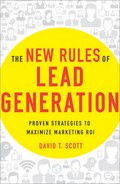About AdChoices and the Google Display Network
Google has created an ad network—a network of advertising partnerships with numerous independent websites—called the Google Network. This network allows Google to expand the number of sites where it can post SEM and display ads.
The Google Network is divided into two components: The Google Search Network includes partner search engines such as Ask.com. When a user searches for keyword search terms (e.g., “new video games”) on the partner search engines, Google supplies the search results with search engine ads—the same ads that would appear if the Web user were searching for that term on Google.
The Google Display Network (formerly the Google Content Network) allows Google to run SEM and display ads on thousands of independent websites. Google has agreements with website owners (who are part of Google’s AdSense program) to run content-related ads on their sites. For example, a number of blogs and chat sites run by video game enthusiasts display SEM or display ads for video game products in the margins of their web pages. The ads usually appear in a small menu window with the label “AdChoices” (formerly “Ads By Google”).
Note: Microsoft has two content networks, the Bing Content Network and the Microsoft Media Network, which they use to post SEM and display ads on partner websites. However, Microsoft and Bing do not currently have the large volume and range of partner sites that you get with the Google Display Network.
When you set up your SEM ad, Google’s ad creation platform will ask if you want the ad to appear on the content-related websites of publishers in the Google Display Network. An AdChoices ad can bring you additional leads or sales by placing your ad on a webpage where the content is aimed at your target audience. For example, if you have a video game product, and you choose to have your SEM ad displayed on video game blogs and chat rooms, your ad may get a good response. The people viewing the ad on those websites are video game enthusiasts who may be looking for your product.
However, I strongly recommend that you do AdChoices ads as a separate ad campaign from your regular search engine ad campaign. The bidding strategies for AdChoices websites are completely different. Whereas you might pay a $2.50 PPC rate to place your ad on the search engine, you may pay only a 50¢ PPC rate to place an ad on a content-related site. Therefore, you should treat search engines and publishers’ websites as two different venues, and have separate SEM ads for each venue (e.g., one set of ads for the search engine and one set for the content-related website). By keeping AdChoices ads as a separate campaign, you protect yourself from overpaying, and have the ability to sharply hone your PPC bid.
You should test two or more different ads on the AdChoices websites, just as you might test two or more ads on the search engine, to see which ad gets the best response. And measure the results of your AdChoices website ads separately from the results of your search engine ads, so you can see how well each set of ads performs on each venue.
